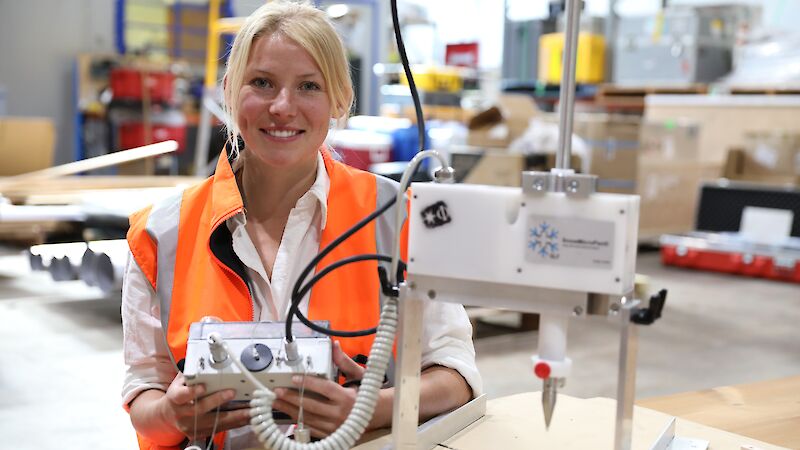The Australian Antarctic Program’s sea-ice research is bridging the north-south polar divide.
Snow physics researcher Dr Amy Macfarlane, from the WSL Institute for Snow and Avalanche Research SLF in Switzerland, is swapping the Arctic for the Antarctic to help further understanding of how sea ice regulates Earth’s climate.
As an inaugural Mertz Fellow, Dr Macfarlane will spend three months working with Australian Antarctic Division sea-ice scientist Dr Petra Heil examining the reflective properties of snow-covered sea ice.

Sea ice and the snow layer that accumulates on top, reflect sunlight back into space, helping to reduce warming of the earth’s oceans and atmosphere.
Sea ice reflects between 50 and 70 per cent of sunlight, while snow-covered sea ice reflects up to 90 per cent of this energy.
The amount of reflectiveness is known as ‘albedo’ and is affected by the thickness, density and crystal structure of the ice and snow.
“I’ll be finding and collating historical and modern datasets that have been collected on the sea-ice snow microstructure during voyages around Antarctica,” Dr Macfarlane said.
“I’ll aim to get these datasets into a format that anyone can use, to enhance their value and application in future research.
“I’ll also investigate how the snow microstructure is influencing albedo in Antarctica and how well this process is represented in climate models.”
Dr Macfarlane recently completed her PhD on sea-ice snow in the Arctic, spending seven months on the Polarstern during the MOSAiC expedition, as the ship spent a year drifting with the sea ice.
She is looking forward to understanding more about the differences between the Arctic and Antarctic – besides the absence of polar bears – and the research underway.
“The Mertz Fellowship is a great opportunity for me, in this early stage of my career, to understand what people are working on and the different environmental conditions and processes underway in Antarctica,” she said.
The $10,000 Mertz Fellowship is a joint award from the Swiss Polar Institute and the Antarctic Science Foundation.
The fellowship launched in 2022 and aims to promote linkages between Swiss and Australian higher education and research institutions through scientific networking and joint projects.
It takes its name from Swiss polar explorer Dr Xavier Mertz, who was part of Douglas Mawson’s Australasian Antarctic Expedition from 1911-1914.
“I’ve already had a lot of opportunities that I wouldn’t have had without the Mertz Fellowship,” Dr Macfarlane said.
“Just after I arrived in September, I was invited to collaborate on a book chapter with Australian sea-ice scientists.”
Dr Macfarlane will be able to use her connections and the snow microstructure datasets that she’s working on now, when she takes up a post-doctoral research position at UiT The Arctic University of Norway and Northumbria University next year, funded by the SNF-Swiss Postdoc Mobility.
“Being part of an international community of sea-ice researchers, and being able to meet face-to-face and establish collaborations, is really important as I establish my career,” she said.
As part of the fellowship exchange, University of Tasmania scientist Dr Melissa Gerwin, is pursuing a project at the WSL Institute for Snow and Avalanche Research, on high-altitude ecosystem vulnerability to warming.






